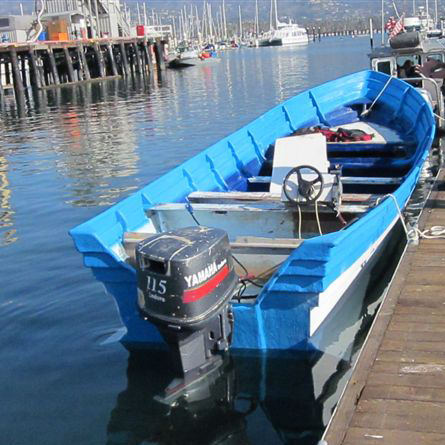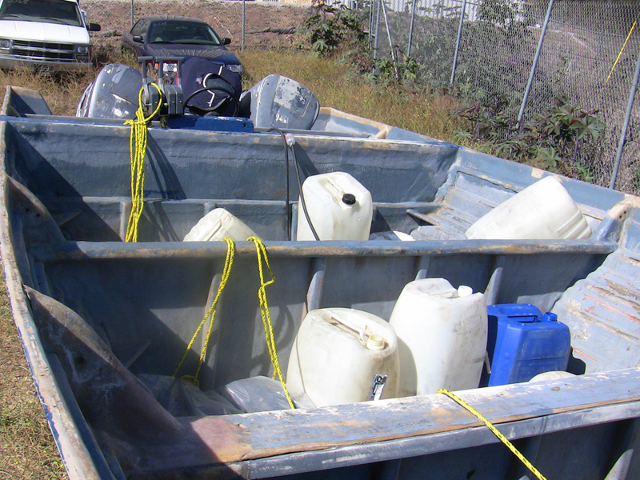More and More Smugglers Take to the Sea
Santa Barbara and Southern California See Rising Problem with Panga Boats
The Department of Homeland Security is so good at stopping Mexican drug traffickers and migrants from crossing into the United States by land, say county and federal officials, that more and more people are now braving the ocean to illegally enter the country. Since 2009, there’s been a notable uptick in the number of panga boats — small, slender, open vessels built for speed and able to carry a ton of cargo — spotted and seized off the coast of California after launches from northwest Baja California.

Within the last six months, three abandoned panga boats have been discovered along Santa Barbara County’s coastline. Local fishermen spotted two more cutting through the channel in that time, and another was chased but lost by the Coast Guard in October. Fifteen Mexican nationals were rescued from Santa Cruz Island in July 2010 after being abandoned without food or shelter.
The most recent recovery took place this Wednesday when authorities received reports of a panga boat floating near Fernald Point in Montecito. The 30-foot craft was unoccupied, but the number of life vests found on the shore suggests around 20 people were aboard at one point. The other two pangas ditched in Santa Barbara were likely used to transport drugs, officials said, as packaging discarded in them reeked of marijuana.
Down in Ventura, three people were arrested in January after their boat, loaded with marijuana, was seized near Point Mugu. That incident came less than two weeks after authorities arrested 10 people in the same area and confiscated 2,500 pounds of weed. This Thursday, suspected immigrants were arrested in Huntington Beach when their boat washed ashore, and three men were taken into custody in Malibu on Saturday when their panga with 1,500 pounds of marijuana beached in an area known as Smuggler’s Cove.
Sergeant Brad McVay with the County Sheriff’s Department described Santa Barbara as a “prime target location” for nautical smugglers who take advantage of remote beaches close to highways and other points of escape. McVay said local law enforcement patrol units — on the ocean and in the air — have been educated on what to look for when searching for pangas, and efforts are being made to increase the public’s awareness of their presence. Panga boats, he explained, are distinct looking and not very common to the area. They’re rarely used by fishermen here and not taken out by recreational boaters.
Petty Officer Adam Eggers, a spokesperson for the U.S. Coast Guard based in Los Angeles, said the use of panga boats to transport people and drugs from Mexico to the States is “definitely on the increase.” He said there were only a few seizures and arrests in Southern California in 2009 with a slight rise in 2010 of about 10 such incidents. In 2011, however, there were close to 30. “It’s obviously something we’re aware of,” he said. “Homeland Security has been doing such a good job [of preventing border crossings] that we’re having to adjust to [the smugglers’] adjustments.” Eggers couldn’t go into detail about how the Coast Guard and other agencies are tweaking or bolstering their crackdown strategies, but he said patrol boats are constantly surveying Southern California’s waters and conducting special operations based on specific intelligence.

While there haven’t been any violent confrontations here on the Pacific Coast, Eggers said, panga smugglers in the Gulf of Mexico off the coasts of Florida and Texas have fired upon law enforcement trying to stop them. During pursuits anywhere, he went on, authorities take pains to keep the situations as safe as possible, especially in choppy conditions and when the pangas are laden with suspected migrants. “There aren’t seat belts in those boats,” he said.
Here in Santa Barbara, the Coast Guard has a safety unit that conducts environmental investigations when an abandoned boat is found. Many of the panga crafts, Eggers said, contain multiple fuel drums that can harm sensitive ecosystems — such as the Marine Sanctuaries around the Channel Islands — if they make it into the water. One panga discovered this fall near Los Angeles had 18 fuel drums on board, enough to propel it all the way to Northern California.



